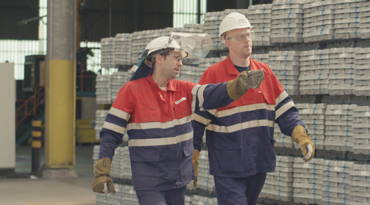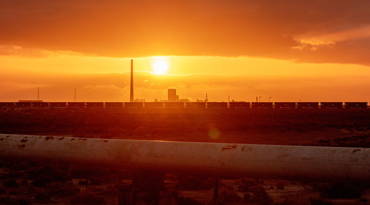Overview
The Nyrstar Hobart smelter is one of the world’s largest zinc smelters in terms of production volume, focusing on high-value added products for export primarily to Asia.
The facility uses the RLE process for zinc production. Hobart’s key products are SHG zinc, die cast alloys (branded ‘EZDA’) and CGG (continuous galvanising grade) alloys. In addition, the site also makes by-products of cadmium, copper sulphate, paragoethite, lead sulphate, leach concentrate, gypsum and sulphuric acid.
Hobart is closely integrated with the Nyrstar Port Pirie multi-metals smelter which processes Hobart’s paragoethite by-product as well as other leach by-products.
The site has been significantly upgraded and modernised, with improvements in the gas purification and acid plants in the roasting facility and in the leaching and purification processes; the introduction of mechanised zinc stripping in Electrolysis and the automation of the casting plant.
To read a summary of our 2024 Economic Value Report and our contribution to the Australian economy. Click here.
The Zinc Mark
In September 2024, Nyrstar Hobart achieved The Zinc Mark certification meeting best in class requirements for responsible production practices.
The Zinc Mark is achieved through The Copper Mark assurance framework and aims to promote responsible production practices along the value chains of the covered minerals.
To receive The Zinc Mark, operations are assessed and independently verified against 32 responsible production criteria including greenhouse gas emissions, community health and safety, respect for Indigenous rights and business integrity and confirmed to meet the required performance threshold. More information about The Zinc Mark verification can be found here.
Nyrstar’s Zinc Mark award for its Hobart operations can be found here

Quick Facts
Technology: Roast, leach, electrolysis (RLE) smelting
Products: Special high grade (SHG) zinc, zinc alloys and sulphuric acid
Employees: ~520 (direct), ~650 (direct + contractors)
Nyrstar Hobart holds certificates for:
Location
The Nyrstar Hobart smelter is located on the western bank of the Derwent River Estuary in Hobart, Tasmania.
Environment
We continue to work towards improving our efforts to reduce the environmental footprint of our production process and reduce any operational impacts on our receiving environment.
A comprehensive presentation, summary and analysis of data collected at the Hobart site is reported in the Nyrstar Hobart Public Environment Report, which is prepared every three years.
This report is an opportunity to examine the environmental performance of the Hobart operations against our commitments and to monitor our progress particularly in the areas of air, water, land and the local community.
To read the latest Nyrstar Hobart Public Environment Report, please click here.
The Nyrstar Hobart smelter has been part of the local community for more than 100 years and work on a major transformation project to build a new Cellhouse ensuring the future sustainability of the site is being reviewed.
The New Cellhouse Construction Environmental Management Plan can be viewed here.
History
Nyrstar’s Hobart zinc smelter has a rich history spanning more than a century. The site has been one of Tasmania’s largest industries since 1916 is one of the state’s leading exporters by value. The plant grew from a small-scale test unit in 1916 before expanding in 1917 and moving to a 100 tonne per day operation by 1921.
In the 1920s the expanding community was almost an extension of the site as the smelter’s housing scheme was constructed. The smelter also founded a co-operative council that provided supplies including firewood and meat at low cost to employees, along with an insurance scheme.
The workforce peaked at 3000 employees in the 1960s, while the 1990s saw huge improvements in environmental practices including the cessation of ocean dumping of jarosite.
Significant advances in technology and safety practices and numerous expansions and modifications mean that today’s plant has a production capacity of up to 280,000 tonnes.


